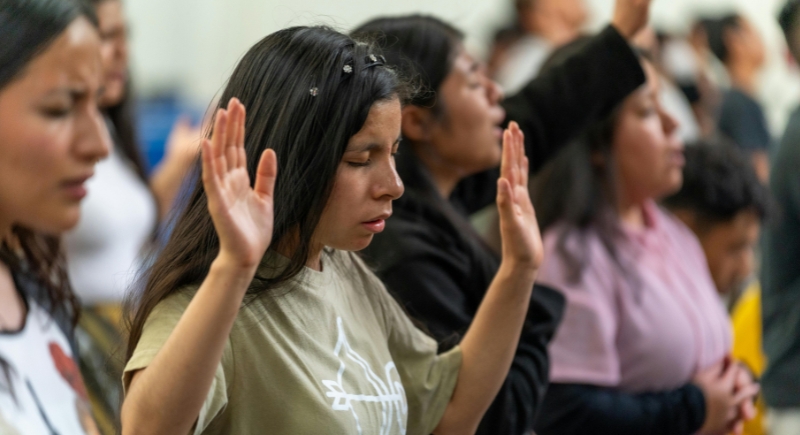Gen Z Is Now Attending Church More Than Any Other Generation
For years, churches counted on older adults to keep pews filled. Grandparents, parents, and longtime members were the steady core of Sunday services. But something unexpected is happening in 2025. The generation that many assumed was drifting away from religion is now showing up more often than anyone else. And the numbers make the shift clear.
New national research shows that Gen Z adults, those between 18 and 28, now top the charts for church attendance. They aren’t exactly camped out in pews every Sunday, but compared to Boomers and even Gen X, the youngest adults are now the most regular participants. It’s what researchers are calling a “generational reversal,” and it’s caught the attention of pastors everywhere.
A Historic Flip

Image via Pexels/Israel Torres
The Barna Group, in partnership with Gloo, tracked churchgoing patterns through more than 5,000 surveys earlier this year. Their findings show Gen Z averaging 1.9 church visits a month—about 23 services annually. Millennials trail slightly with 1.8 visits monthly, or roughly 22 times a year. Gen Xers attend closer to 19 services annually, while Boomers and Elders now average fewer than 17.
What makes this so striking is the historical backdrop. At the start of the 2000s, older generations attended twice as often. Elders were averaging 2.3 visits monthly, and Boomers hovered around two. Over the last 25 years, those figures steadily dropped. Gen Z and Millennials, once thought of as the least reliable group, have almost doubled their attendance since the pandemic.
Why Younger Generations Are Leading
The Barna Group researchers point to a few possible explanations. Some suggest that many casual attendees, often older, have simply faded out, leaving behind a smaller but more dedicated group of younger believers. Others highlight the pull of community, volunteer opportunities, and digital connections that churches are now offering, which tend to resonate more with younger adults.
The pandemic also shifted priorities. After a period when services were online-only, Gen Z and Millennials came back with a higher rate of attendance than before. Meanwhile, Boomers and Elders never returned to their former consistency. A Pew Research Center survey adds another layer, showing that the overall percentage of young adults attending church has dipped compared to ten years ago; Barna’s study, however, shows that those who do attend are going more often.
The Two-Out-Of-Five Reality

Image via Pexels/Israel Torres
Even with the boost from younger generations, weekly attendance is far from the norm. Across all ages, the typical churchgoer attends about 1.6 times per month—two Sundays out of five. That’s a big shift from the days when church life revolved around weekly, or even twice-weekly, gatherings.
For pastors, this has created challenges. Series-based preaching, volunteer teams, and long-term discipleship programs become harder to build when people are present less than half the time. Still, the fresh energy among Gen Z and Millennials offers a chance to rethink what community and faith formation look like in 2025.
What Comes Next
Church leaders see this moment as both a challenge and an opportunity. The challenge lies in adapting to irregular rhythms. The opportunity is in connecting with a generation showing curiosity about faith and a desire for belonging. Strategies that pair in-person gatherings with digital engagement through texts, small groups, or online resources may help sustain momentum.